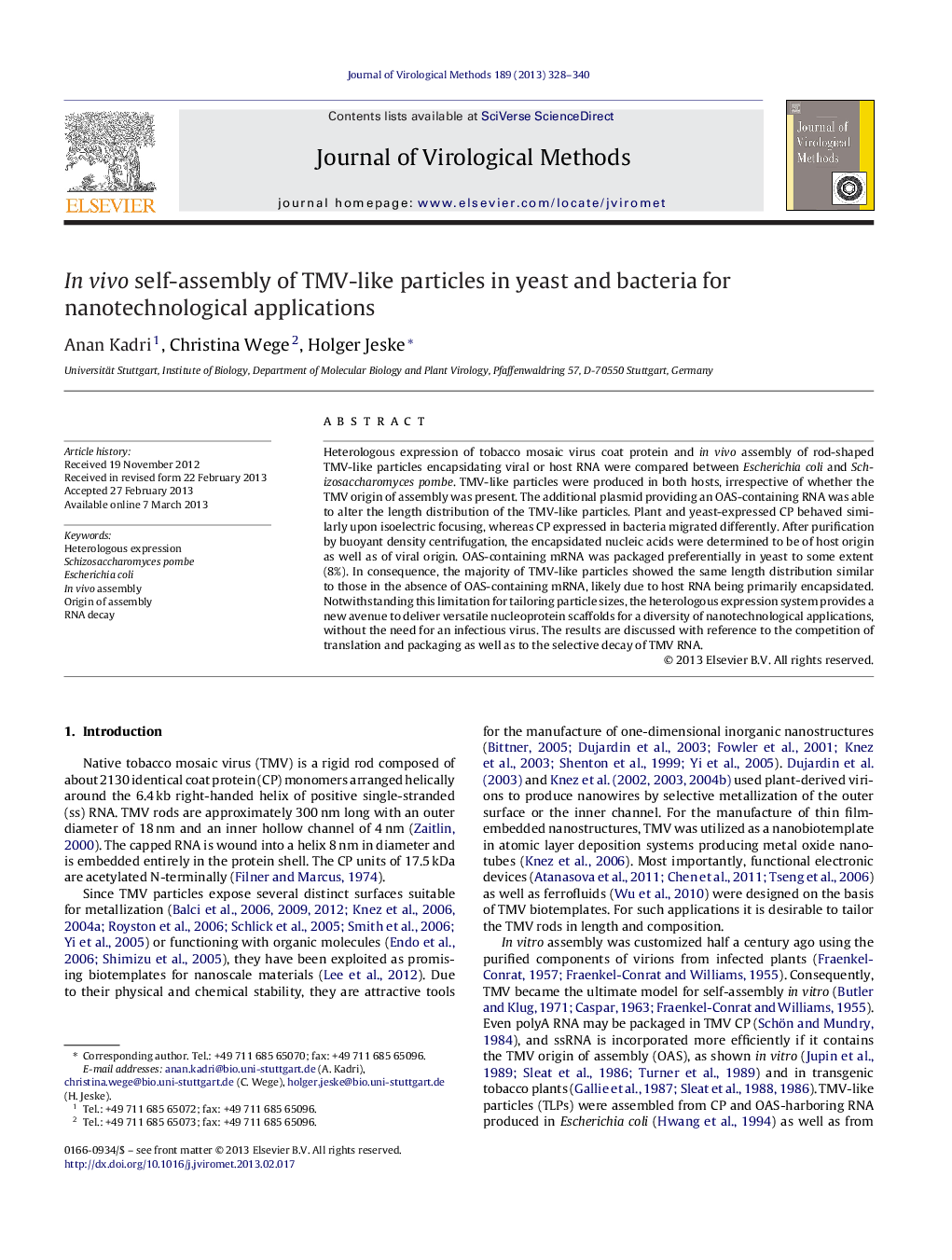| Article ID | Journal | Published Year | Pages | File Type |
|---|---|---|---|---|
| 3406696 | Journal of Virological Methods | 2013 | 13 Pages |
•First in vivo assembly of TMV-like rods in Schizosaccharomyces pombe.•Ectopic expression of TMV coat protein and origin of assembly containing mRNA programmes the length of the rods in yeast.•RNA decay discussed as cause for shorter, but defined rods in vivo than in vitro.
Heterologous expression of tobacco mosaic virus coat protein and in vivo assembly of rod-shaped TMV-like particles encapsidating viral or host RNA were compared between Escherichia coli and Schizosaccharomyces pombe. TMV-like particles were produced in both hosts, irrespective of whether the TMV origin of assembly was present. The additional plasmid providing an OAS-containing RNA was able to alter the length distribution of the TMV-like particles. Plant and yeast-expressed CP behaved similarly upon isoelectric focusing, whereas CP expressed in bacteria migrated differently. After purification by buoyant density centrifugation, the encapsidated nucleic acids were determined to be of host origin as well as of viral origin. OAS-containing mRNA was packaged preferentially in yeast to some extent (8%). In consequence, the majority of TMV-like particles showed the same length distribution similar to those in the absence of OAS-containing mRNA, likely due to host RNA being primarily encapsidated. Notwithstanding this limitation for tailoring particle sizes, the heterologous expression system provides a new avenue to deliver versatile nucleoprotein scaffolds for a diversity of nanotechnological applications, without the need for an infectious virus. The results are discussed with reference to the competition of translation and packaging as well as to the selective decay of TMV RNA.
